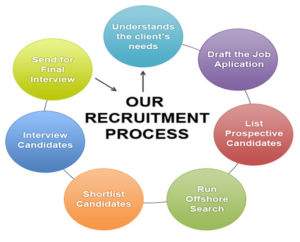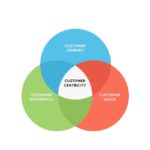CHURN, CHURN, CHURN AND BURN BABY BURN!
In case you missed it coming out of your pandemic isolation, the fulcrum has tipped and will not be tipping back to the old ways and old habits for recruiting, sustaining group productivity and a free pass for outsourced H R recruiters who just hire for skills and then watch churn cost mount.
You are now responsible, with your hiring manager at your side, for elevating your targeting and all your recruiting processes to search for and find talent. Not skills sets, talent! The real deal.
Dive into this case study. See what some of the data points tell you. Change your strategy. Change your work behavior. Learn and do better. The cost of mediocre and repetitive hiring bias is too costly to the organization.
CASE STUDY: THE COST OF CHURN
Portions Curated and Excerpted from Evolve Performance Group, “The True Cost of Employee Turnover” and Crazy Smart!, Joe Slade’s book about winners.
The cost of churn is real and it’s immense. In today’s competitive business world, companies need to attract and retain talent to survive and thrive. Turnover places a drain on profits for SMBs, which creates an enormous drain on the national economy. The Bureau of National Affairs estimates U.S. businesses lose $11 billion annually due to employee turnover.

Some studies like those from the Society for Human Resource Management (SHRM) predict that every time a business replaces a salaried employee, it costs an average of six to nine months’ salary. For a manager making $40,000 a year, that’s $20,000 to $30,000 in recruiting and training expenses.
Thirty case studies taken from the 11 most-relevant research papers on the cost of employee turnover demonstrate that it costs businesses from a low of about one-fifth of a worker’s salary up to two times the annual salary to replace that worker. For businesses that experience high levels of turnover, this represents significant costs that can potentially be avoided.
Here are the replacement costs for some traditional positions and job titles:
- An $8 per hour employee: $3,500
- An $80,000 salaried manager: $70,000
- Grocery store manager: $34,735
- Hotel front-office: $5,688 to $5,965
- Hourly store personnel: $4,291 to $3,372
- Registered nurses: $23,487
- Administrative assistants or managers: $10,031
- School teacher: $4,366 to $17,872
- Call-center employees: $21,551
- Lower-level executive at a consumer products company (making $125 K): $185,000
The following all-inclusive lists have many direct and indirect costs that are often overlooked.
Direct costs of employee replacement:
- Pre-departure disengagement: loss of productivity and possible clients
- Lost productivity of manager and co-workers
- Cost of overtime
- Advertising
- Lost training and re-training (10–20% of annual salary over time)
- Interviewing
- Drug Testing and Background Checks
- Onboarding
- Lost opportunity cost of the hiring staff’s not doing something else
- Recruiter fees
- Lower productivity of new recruits for up to one year
- Possible increase in the cost of employee benefits
Indirect costs and risks associated with employee turnover:
- The risk of hiring the wrong person—again
- Lower productivity with remaining staff
- Lower team morale
- The spread of fear, doubt, and disengagement
- Remaining staff can become overworked, angry, and resentful.
- Absenteeism and sick days are contagious for the disengaged.
- Rookies make product and service mistakes that cost money and lose customers.
- Mistakes can raise insurance rates.
- Losing customers increases the cost to find new customers.
- Loyal customers notice change.
- Losing customers is contagious.
- Loss of word-of-mouth referrals is contagious.
- Loss of reputation starts with disengaged employees.
- Loss of institutional knowledge can be costly and dangerous to the company’s security, reputation, and client and vendor relationships.
Calculate Your Cost of Employee Turnover. Finding an automated calculator to “Calculate Your Cost of Employee Turnover” is easy. For example, the Society for Human Resource Management has a worksheet. The Association for Talent Development and several private companies have fill-in the box calculators.
What’s the Impact? Employee turnover is expensive. Losing top performers can have long lasting economic impact on SMBs. A bad hire costs a company five times an annual salary to replace them, and it can take up to 32 weeks for a new hire to become proficient in their job. Based on data from LinkedIn, if a company with 10,000 employees reduced its turnover by a mere 1%, it would save about $7.5 million each year.
A recent study published in Personnel Psychology advised that the top 5% of the workforce produces 26% of the firm’s total output—but often this is the sector of the workforce that’s paid the least. If these winners do not see a path to greater value and higher personal impact, they can disengage or even leave the team. This is potentially contributing to higher-than-average turnover rates across the nation.
Reduce Employee Turnover with Employee Engagement Strategies. Reducing the cost of employee turnover and improving retention rates starts with the right employee engagement strategy. Not every company can afford the high-cost, event-based, Google-like strategy of beach volleyball, a nap room, and all the Red Bull you can drink. But our experience and data show that improving individual, team, and overall business performance is the ultimate reward for all involved.
Applicant Tracking Software (ATS) is now used by more than 90% of U.S. companies. That’s an addiction to technology without qualifying the return on investment (ROI). Yes, it’s cost-effective to post positions on Indeed, Glass Door, and Zip Recruiter. Yes, it’s OK to engage an outsourced HR Recruitment specialist. It can work. Up to a point.
But many involved in talent acquisition, skills recruitment and team building merely default to the software. They will not look for the one or two special performers who don’t fit under the middle of the bell curve. If you’re just going through these motions, you’ll keep getting average results.
At what point does the CEO, president, or hiring manager hold themselves, the recruiter and the software accountable for the bad hires and churn costs that overwhelm the initial time and cost advantages of using the software platform and these “specialists”?
Over-reliance on these technologies and specialists points to a form of self-poisoning. According to a study by Leadership IQ, 46% of newly-hired employees will fail within 18 months, while only 19% will achieve unequivocal success.
One half of new hires fail in the first 18 months! Do you really want to do that to yourself?
Contrary to popular belief, a lack of technical skills is not the primary reason why new hires fail. Instead, poor interpersonal skills dominate the list—flaws which many of their managers admit were overlooked during the interview process.
The study found that 26% of new hires fail because they can’t accept feedback, 23% because they’re unable to understand and manage emotions, 17% because they lack the necessary motivation to excel, 15% because they have the wrong temperament for the job, and only 11% because they lack the necessary technical skills.
In Crazy Smart! we look at winners and what they bring to the organization. Here’s what we know:
- Winners show more solidarity with other winners on the team.
- Winners pursue more teaching and learning in the workplace and in life.
- Winners discuss their mistakes openly. Then they practice more, and with more purpose.
- Winners focus intensely on building winning relationships and sustaining them.
- Winners know that a positive culture comes from the top down.
- Winners are generous to others.
- Winners are talented, motivated learners.
- Winners learn and use emotional intelligence (EQ).
- Winners build success upon character and integrity, not just on attractiveness.
- Winners can deal with ambiguity.
- Winners strive together!
Start looking for your new talented team members through the lens of productivity, sustainability and greater profitability when you kill the churn and nurture a culture of winners!
#productivity #costofchurn #leadership #doitright #b2bmarketing #unbiased #diverseworkgroups
https://www.dropbox.com/s/azlod6lvw8kwat5/Case%20Study%20on%20The%20Cost%20of%20Churn.docx?dl=0
https://www.winnersrippleout.com










